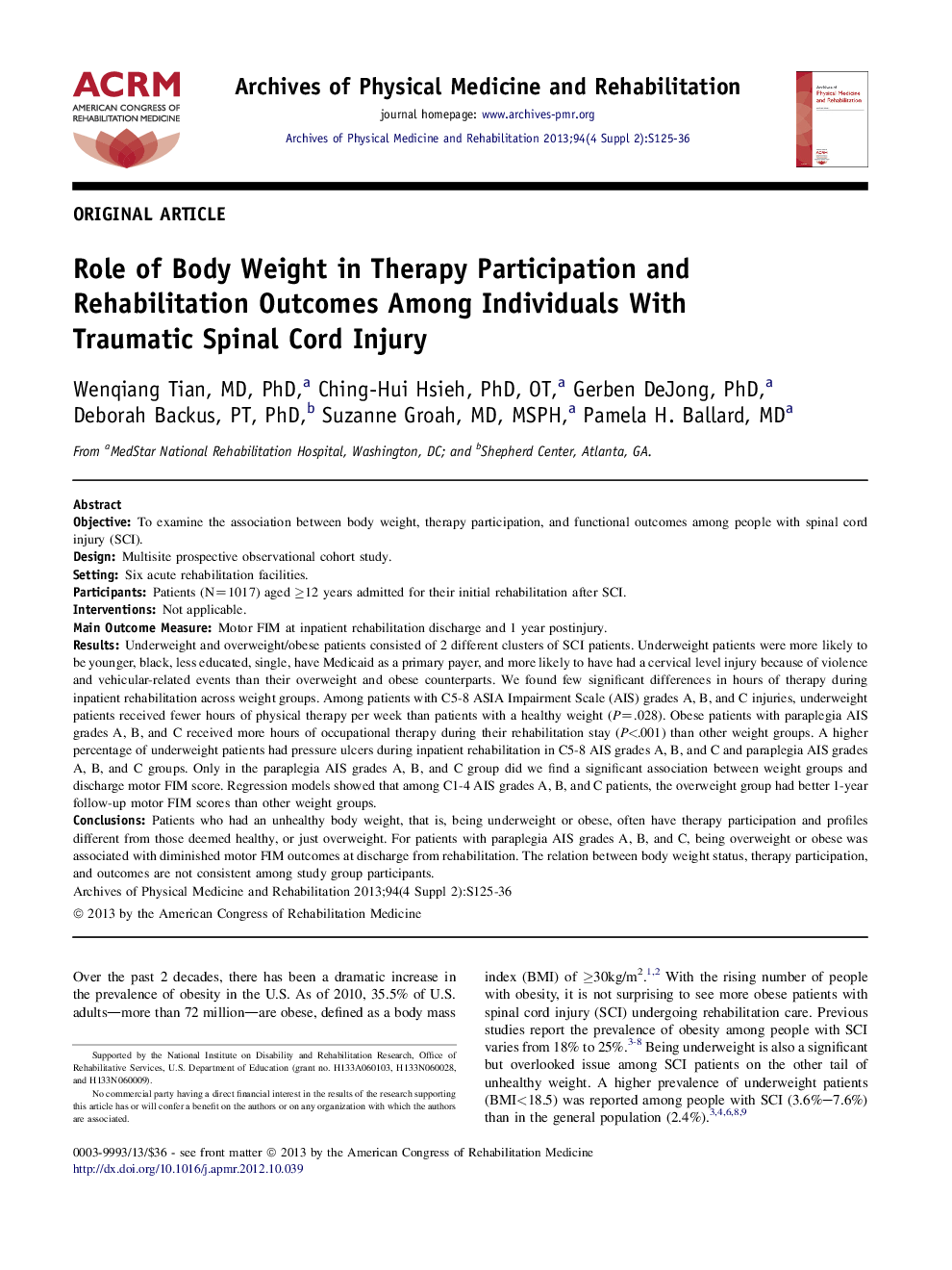| کد مقاله | کد نشریه | سال انتشار | مقاله انگلیسی | نسخه تمام متن |
|---|---|---|---|---|
| 3448882 | 1595713 | 2013 | 12 صفحه PDF | دانلود رایگان |

ObjectiveTo examine the association between body weight, therapy participation, and functional outcomes among people with spinal cord injury (SCI).DesignMultisite prospective observational cohort study.SettingSix acute rehabilitation facilities.ParticipantsPatients (N=1017) aged ≥12 years admitted for their initial rehabilitation after SCI.InterventionsNot applicable.Main Outcome MeasureMotor FIM at inpatient rehabilitation discharge and 1 year postinjury.ResultsUnderweight and overweight/obese patients consisted of 2 different clusters of SCI patients. Underweight patients were more likely to be younger, black, less educated, single, have Medicaid as a primary payer, and more likely to have had a cervical level injury because of violence and vehicular-related events than their overweight and obese counterparts. We found few significant differences in hours of therapy during inpatient rehabilitation across weight groups. Among patients with C5-8 ASIA Impairment Scale (AIS) grades A, B, and C injuries, underweight patients received fewer hours of physical therapy per week than patients with a healthy weight (P=.028). Obese patients with paraplegia AIS grades A, B, and C received more hours of occupational therapy during their rehabilitation stay (P<.001) than other weight groups. A higher percentage of underweight patients had pressure ulcers during inpatient rehabilitation in C5-8 AIS grades A, B, and C and paraplegia AIS grades A, B, and C groups. Only in the paraplegia AIS grades A, B, and C group did we find a significant association between weight groups and discharge motor FIM score. Regression models showed that among C1-4 AIS grades A, B, and C patients, the overweight group had better 1-year follow-up motor FIM scores than other weight groups.ConclusionsPatients who had an unhealthy body weight, that is, being underweight or obese, often have therapy participation and profiles different from those deemed healthy, or just overweight. For patients with paraplegia AIS grades A, B, and C, being overweight or obese was associated with diminished motor FIM outcomes at discharge from rehabilitation. The relation between body weight status, therapy participation, and outcomes are not consistent among study group participants.
Journal: Archives of Physical Medicine and Rehabilitation - Volume 94, Issue 4, Supplement, April 2013, Pages S125–S136